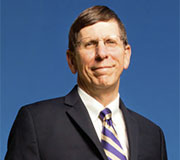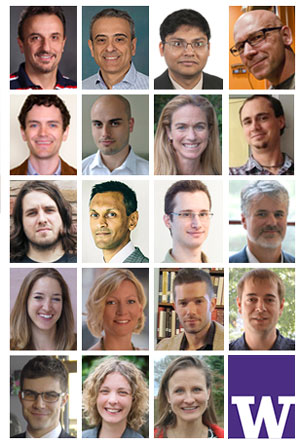 Welcoming a New Class of Innovators
Welcoming a New Class of Innovators
Dear Friends of Engineering,
I am excited to welcome 19 incoming faculty members to the College of Engineering. They are innovators and leaders in their field, with expertise in areas such as stem cell and heart regeneration, composite materials, machine learning, data privacy and information infrastructure. By joining our community, they will help to address our most pressing problems and grow our position as an international leader in engineering research, innovation and education.
|
1st row: Behcet Ackimese (A&A), Mike Averkiou (BioE), Ashis Banerjee (ISE, ME), Ras Bodik (CSE)
2nd row: Sam Burden (EE), Paolo Calvi (CEE), Jennifer Davis (BioE), Sawyer Fuller (ME)
3rd row: Kurtis Heimerl (CSE), Sham Kakade (CSE), Sergey Levine (CSE), Devin MacKenzie (MSE, ME)
4th row: Elizabeth Nance (ChemE), Katharina Reinecke (CSE), David Ribes (HCDE), Thomas Rothvoss (CSE)
5th row: Marco Salviato (A&A), Kelly Stevens (BioE), Mari Winkler (CEE) |
Reuters recently ranked the University of Washington as the most innovative public university in the world. We ranked fourth overall, behind only Stanford, MIT and Harvard. Our engineering faculty power the engine of UW innovation. Over the last five years engineering faculty were responsible for over half of the innovations reported, patents filed and start-ups produced. Last year, our engineering research expenditures topped $134 million. The UW continues to hold top-five ranking in sponsored research funds in the country.
We compete with the top schools in the country for talented faculty members. It is significant that many choose the University of Washington. One new faculty member is Elizabeth Nance, the first Clare Boothe Luce assistant professor in Chemical Engineering. Recognized by Forbes 30 Under 30 in Science and Medicine, she developed the first nanoparticles that penetrate deep within the brain to improve imaging and treatment of brain diseases.
This is an exciting time for the College of Engineering. We are poised to help solve grand challenges in medicine, energy, the environment and more. Our newest faculty members embody our commitment to innovation and education, and will strengthen our atmosphere of discovery. I invite you to learn more about them in this special edition of Washington Engineer.
Michael B. Bragg
Frank & Julie Jungers Dean of Engineering
